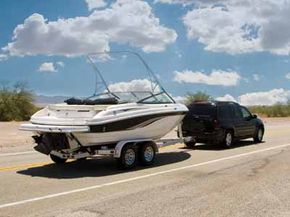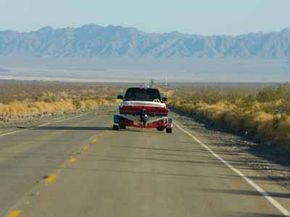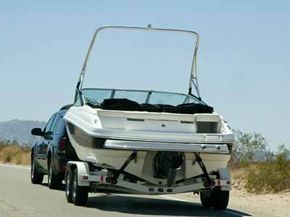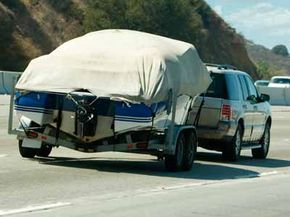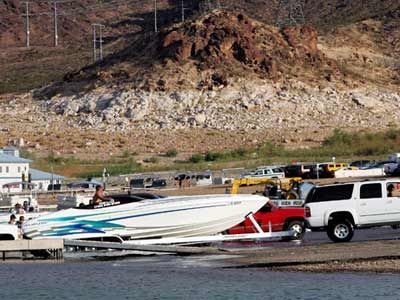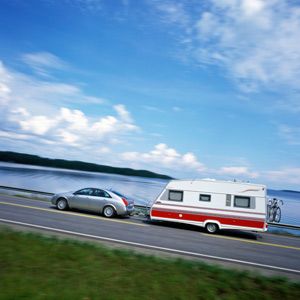Once the vehicle check is out of the way, there are a number of components that need to be looked at on the trailer. One place to start is the electrical system. Have someone stand behind the boat trailer and verify that all the signals are working. Brake lights, blinkers, running lights and brakes should all be checked -- along with the connector between the tow vehicle and the trailer where the wiring passes. Corrosion can be a problem, and the wiring can chafe and short-circuit if not routed in properly.
If the trailer has multiple axles, noticing a flat tire can be a challenge. A good whack with your tire iron can let you know they're inflated, and a quick feel after driving a bit is a good way to tell if one is running hot. Since a flat tire can lead to a fire, nothing beats actually hunkering down and manually checking the pressure of each tire with a pressure gauge to verify their soundness. This should be done before every trip.
Check all the lug nuts and bolts on your hitch and trailer; they can loosen over time through regular driving conditions or rust if they get wet too often. Another issue people towing trailers -- especially boat trailers -- often encounter is problems with the wheel bearings. Wheel bearings warm up during a drive, so if you plunge them into cool water they have a tendency to suck in water as the air inside them cools and shrinks. The outcome is often rust, although spring-loaded pressurized bearing caps can help prevent this from occurring. Bearings can also need a tune-up and some fresh grease if they're running hot.
Many trailers are set up with their own brakes, which mirror the activity of the tow vehicle's movement and brakes. One popular type -- surge breaks -- work automatically. As the tow vehicle slows, the surge brakes kick into action because of the change in forward velocity. Also good are electric brakes, which are hooked up through the connector and sense any pressure on the brake pedal. Especially for heavier loads (and unless you're towing a dinky little rowboat, you probably have what constitutes a heavier load) these types of trailer brakes can be essential. So make sure everything is functioning as it should be before you head out.
Safety chains are attached and secured in a crisscross pattern between the trailer and the tow vehicle to securely hold the trailer in place if the some portion of the hitch should fail. You won't be able to finish out your trip using just the safety chains, but you should be able to safely come to a stop to check out the problem. Breakaway switches are also important components and are often required depending on the weight of the trailer. They work a lot like the emergency clip on a treadmill actually -- if for some reason the tow vehicle and the trailer come apart, the breakaway switch triggers the trailer brakes to come to a stop.
For boat towing, a primary concern is that the mainframe of the trailer can support the boat evenly, and that the boat fits snuggly and securely into its cradle. Hull rollers and pads need to be in good shape so they don't scratch the boat. An appropriate number of straps and ties need to be checked, adjusted and fastened properly so the boat is fully lashed down.
Your checklist is checked for the truck and the boat, and eager travelers have been piling up their luggage in the driveway. But chucking everything in willy-nilly would be about the worst mistake you could make at this point. Unfortunately, you still have a quite a chore ahead of you -- packing the boat so the weight is distributed evenly.
